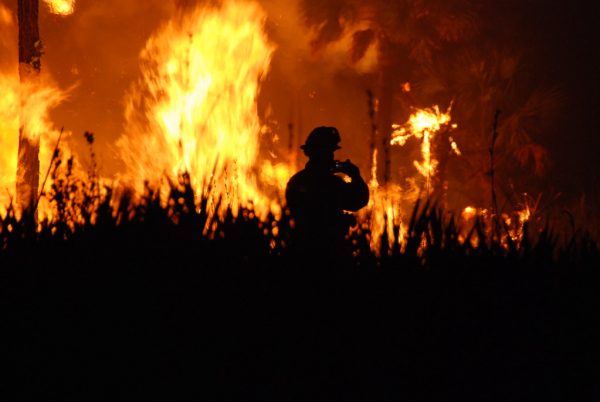
The 2020 wildfire season is the worst on record, with blazes ravaging portions of California, Oregon, Washington and Colorado.
In early October, California officials reported that more than 4 million acres burned across the state this year, more than doubling the previous yearly record from two years ago. The August Complex fire alone surpassed one million acres – larger than the entire state of Rhode Island. Recently, The Cameron Peak Fire became the largest blaze in Colorado state history. The ramifications of these fires go beyond charred grounds, with almost 40 people killed, thousands of homes and billions of dollars in property burned and millions of people exposed to hazardous pollution levels.
A story that is often untold, and lies at the center of these fires, is the story of the men and women putting out the blazes. These firefighters battle long hours, low sleep and high stress. They can even lose track of time when the sun is obscured by smoke.
Research has found that these firefighters struggle with their psychological well-being, leading to increased depression, anxiety, suicidal tendencies and other mental health concerns. Firefighters are exposed to high-risk, low-control situations and regularly deal with death, including the suicide of other firefighters.
- Jenna Moffitt, Janet Bostock, Ashley Cave, 2014. Promoting well-being and reducing stigma about mental health in the fire service. Journal of Public Mental Health, 13(2): 103–113.
- Thomas Joiner, Kimberly Van Orden, Tracy Witte, Edward Selby, Jessica Ribeiro, Robyn Lewis, M David Rudd, 2009. Main predictions of the interpersonal-psychological theory of suicidal behavior: empirical tests in two samples of young adults. Journal of Abnormal Psychology, 118(3): 634–646.
- Nathan Kimbrel, Michelle Pennington, Claire Cammarata, Frank Leto, William Ostiguy, Suzy Gulliver, 2016. Is cumulative exposure to suicide attempts and deaths a risk factor for suicidal behavior among firefighters? A preliminary study. Suicide and Life-Threatening Behavior, 46(6): 669–677.
Researcher Matthew Desmond paid his way through college while fighting fires in Arizona. He returned to the profession for some of his early sociological work, finding that firefighters often do not associate their careers with risk – “Risk? What risk?” – and that organizations recruit firefighters by downplaying the risk they will face in the field.
- Matthew Desmond, 2008. On the fireline: Living and dying with wildland firefighters. University of Chicago Press.
- Matthew Desmond, 2011. Making firefighters deployable. Qualitative Sociology, 34(1): 59-77.
Other research has explored the intersection of punishment and rehabilitation among those in California’s prison fire camps. The findings point out that the fire camps are simultaneously prisons and nonprisons, and those participating are both inmates and heroes.
- Philip Goodman, 2012. “Another second chance:” Rethinking rehabilitation through the lens of California’s prison fire camps. Social Problems, 59 (4): 437-458.
- Philip Goodman, 2014. Race in California’s prison camps for men: Prison politics, space and the racialization of everyday life.American Journal of Sociology, 120(2): 352-394.

Comments